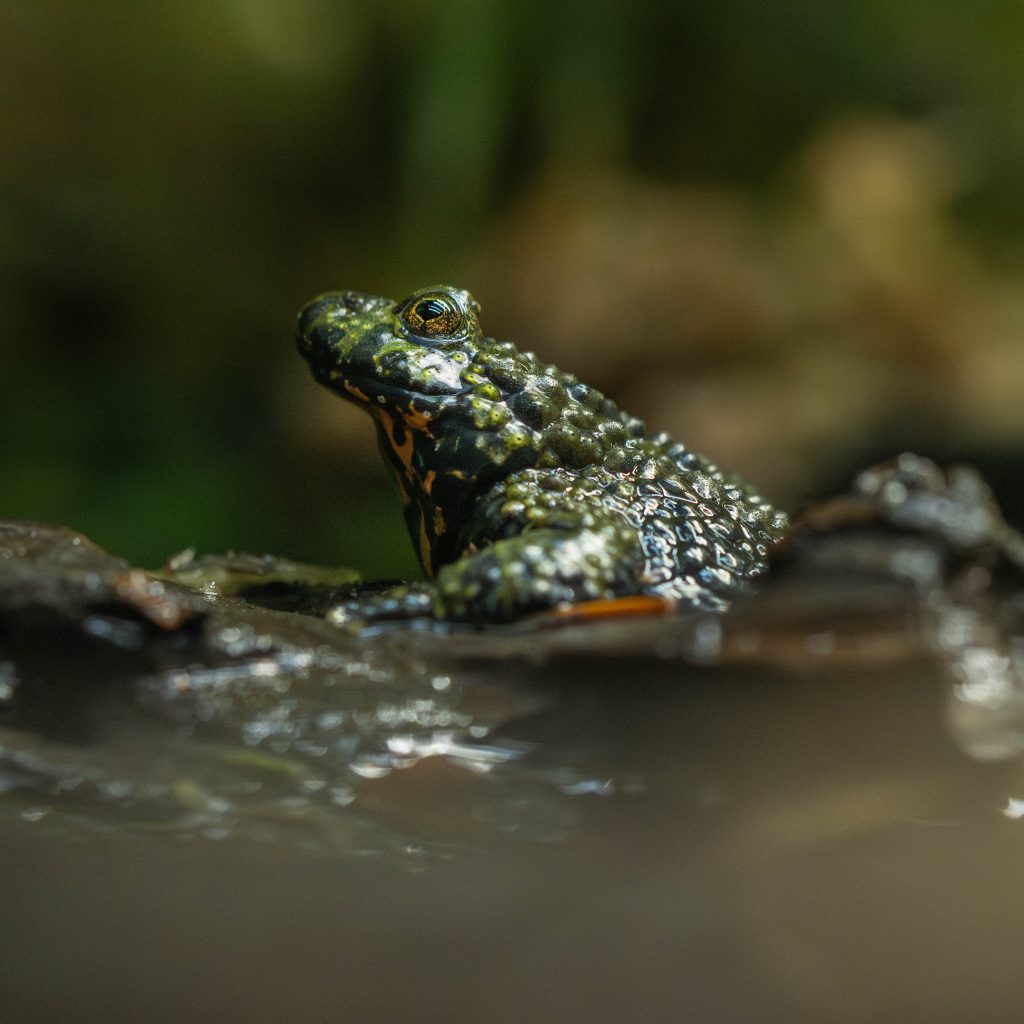Key Facts

The Fire-bellied Toad is a small, brightly coloured amphibian known for its vivid red or orange underbelly—an unmistakable warning to predators. Although called a “toad”, it has many frog-like features. These toads are lively, hardy, and often found in shallow ponds, where they display unique defensive behaviours, such as arching their backs and showing off their warning colours when threatened.
It’s named for the bright red or orange colouring on its underside, which resembles flames and acts as a warning to predators that it may be toxic or distasteful.
Yes, they secrete mild toxins through their skin. While not harmful to humans if handled properly, the secretion can cause irritation if it comes into contact with mucous membranes or open wounds.
To avoid being eaten, the Fire-bellied toad uses a behaviour called the “unken reflex”. Whilst doing this, they arch their backs and raise their limbs to display their brightly coloured bellies. This sudden flash of colour warns predators that they may be toxic, helping the toad avoid being eaten.

Social